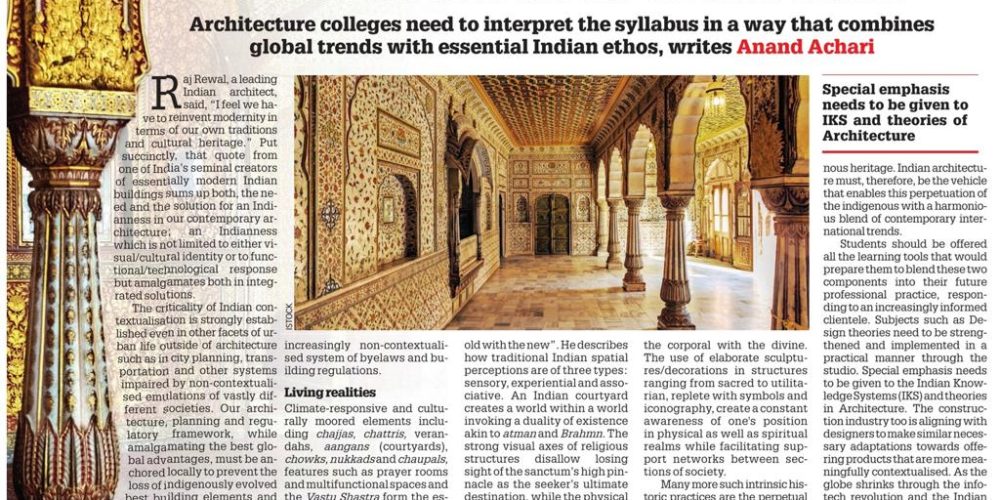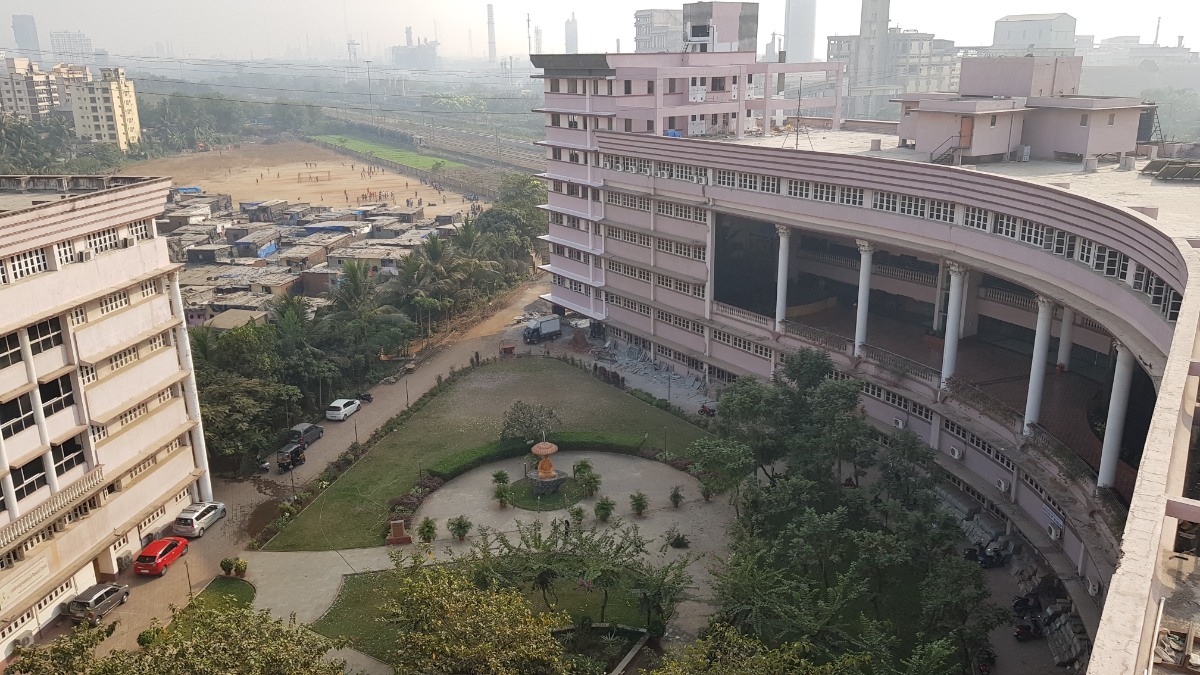Special emphasis needs to be given to the Indian Knowledge System and Theories of Architecture.
– Dr. Prof. Anand Achari
“I feel we have to reinvent modernity in terms of our own traditions and cultural heritage,” says Raj Rewal, a leading Indian architect. The fusion of global modernity with local essence becomes the crux of authentic architectural Indianness, surpassing superficial aesthetics or functionality.
Rewal’s ‘Critical Regionalism’ approach gained international acclaim during the 1970s. It involved integrating international design trends and technological advancements with essential Indian cultural elements, tailored to local materials and labour. Eminent architects like Charles Correa, B V Doshi, and Laurie Baker also embraced this movement, seeking to harmonize international modernity with Indian traditions.
Indian life embodies climate-responsive and culturally moored elements, including chajjas, chattris, verandahs, aangans (courtyards), chowks, nukkads, and chaupals, along with features such as prayer rooms and multifunctional spaces based on Vastu Shastra. Yatin Pandya emphasizes the value of combining old and new in traditional Indian architecture, creating a profound connection between individuals and their environment.
Preserving these historic practices is vital not only for identity but also for environmental sustainability amid the climate crisis, synonymous with the preservation of indigenous heritage. Therefore, architecture can be the vehicle that enables the perpetuation of the indigenous with a harmonious blend of contemporary international trends.
Architectural education must prepare students to blend these two components into their future professional practice, emphasizing subjects such as design theories and Indian Knowledge Systems to respond to an increasingly informed clientele. Collaboration between the construction industry and designers can offer contextually meaningful products.
As the globe shrinks through the infotech revolution and the Indian diaspora spreads its impactful footprint, the demand for this Indianness to manifest in every aspect of life is bound to grow exponentially in our markets.
Read the full article >



